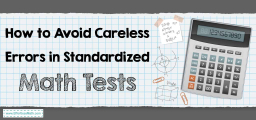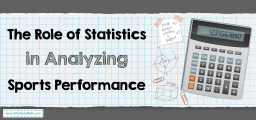How to Solve Infinite Geometric Series? (+FREE Worksheet!)
Learn how to solve the Infinite Geometric Series using the following step-by-step guide and examples.

Related Topics
- How to Solve Finite Geometric Series
- How to Solve Geometric Sequences
- How to Solve Arithmetic Sequences
Step by step guide to solve Infinite Geometric Series
- Infinite Geometric Series: The sum of a geometric series is infinite when the absolute value of the ratio is more than \(1\).
- Infinite Geometric Series formula: \(\color{blue}{S= \sum_{i=0}^ \infty a_{i}r^i=\frac{a_{1}}{1-r}}\)
Infinite Geometric Series – Example 1:
Evaluate infinite geometric series described. \(S= \sum_{i=1}^ \infty 9^{i-1}\)
Solution:
Use this formula: \(\color{blue}{S= \sum_{i=0}^ \infty a_{i}r^i=\frac{a_{1}}{1-r}} → S= \sum_{i=1}^ \infty 9^{i-1}=\frac{1}{1-9}=\frac{1}{-8}=-\frac{1}{8}\)
The Absolute Best Book to Ace Pre-Algebra
Infinite Geometric Series – Example 2:
Evaluate the infinite geometric series described. \(S= \sum_{k=1}^ \infty (\frac{1}{4})^{k-1}\)
Solution:
Use this formula: \(\color{blue}{S= \sum_{i=0}^ \infty a_{i}r^i=\frac{a_{1}}{1-r}} → S= \sum_{k=1}^ \infty (\frac{1}{4})^{k-1}=\frac{1}{1-\frac{1}{4}}=\frac{1}{\frac{3}{4}}=\frac{4}{3}\)
Infinite Geometric Series – Example 3:
Evaluate the infinite geometric series described. \(S= \sum_{i=1}^ \infty 8^{i-1}\)
Solution:
Use this formula: \(\color{blue}{S= \sum_{i=0}^ \infty a_{i}r^i=\frac{a_{1}}{1-r}} → S= \sum_{i=1}^ \infty 8^{i-1}=\frac{1}{1-8}=\frac{1}{-7}=-\frac{1}{7}\)
Infinite Geometric Series – Example 4:
Evaluate the infinite geometric series described. \(S= \sum_{k=1}^ \infty (\frac{1}{2})^{k-1}\)
Solution:
Use this formula: \(\color{blue}{S= \sum_{i=0}^ \infty a_{i}r^i=\frac{a_{1}}{1-r}} → S= \sum_{k=1}^ \infty (\frac{1}{2})^{k-1}=\frac{1}{1-\frac{1}{2}}=\frac{1}{\frac{1}{2}}=2\)
Exercises for Solving Infinite Geometric Series
The Absolute Best Book to Ace the College Algebra Course
Determine if each geometric series converges or diverges.
- \(\color{blue}{a_{1} = –3, r = 4}\)
- \(\color{blue}{a_{1}= 5.5, r = 0.5}\)
- \(\color{blue}{a_{1} = –1, r = 3}\)
- \(\color{blue}{81 + 27 + 9 + 3 …,}\)
- \(\color{blue}{–3 + \frac{12}{5} – \frac{48}{25} + \frac{192}{125} …,}\)
- \(\color{blue}{\frac{128}{3125} – \frac{64}{625} + \frac{32}{125} – \frac{16}{25 }…,}\)
Answers

- \(\color{blue}{Diverges}\)
- \(\color{blue}{Converges}\)
- \(\color{blue}{Diverges}\)
- \(\color{blue}{Converges}\)
- \(\color{blue}{Converges}\)
- \(\color{blue}{Diverges}\)
The Best Books to Ace Algebra
Related to This Article
More math articles
- How to Use Parallelogram Rule for Vector Addition and Subtraction
- 5th Grade Georgia Milestones Assessment System Math Practice Test Questions
- 10 Most Common 7th Grade PARCC Math Questions
- How to Calculate and Interpret Correlation Coefficients
- How to Perform Vector Addition and Subtraction
- ParaPro Math FREE Sample Practice Questions
- ParaPro Math Worksheets: FREE & Printable
- How to Classify Polygons: A Step-by-Step Guide to Shape Identification
- The Practical Benefits Of Knowing Math – The 10 Best Industries For Math Geeks
- How to Inscribe a Regular Polygon within a Circle

























What people say about "How to Solve Infinite Geometric Series? (+FREE Worksheet!) - Effortless Math: We Help Students Learn to LOVE Mathematics"?
No one replied yet.